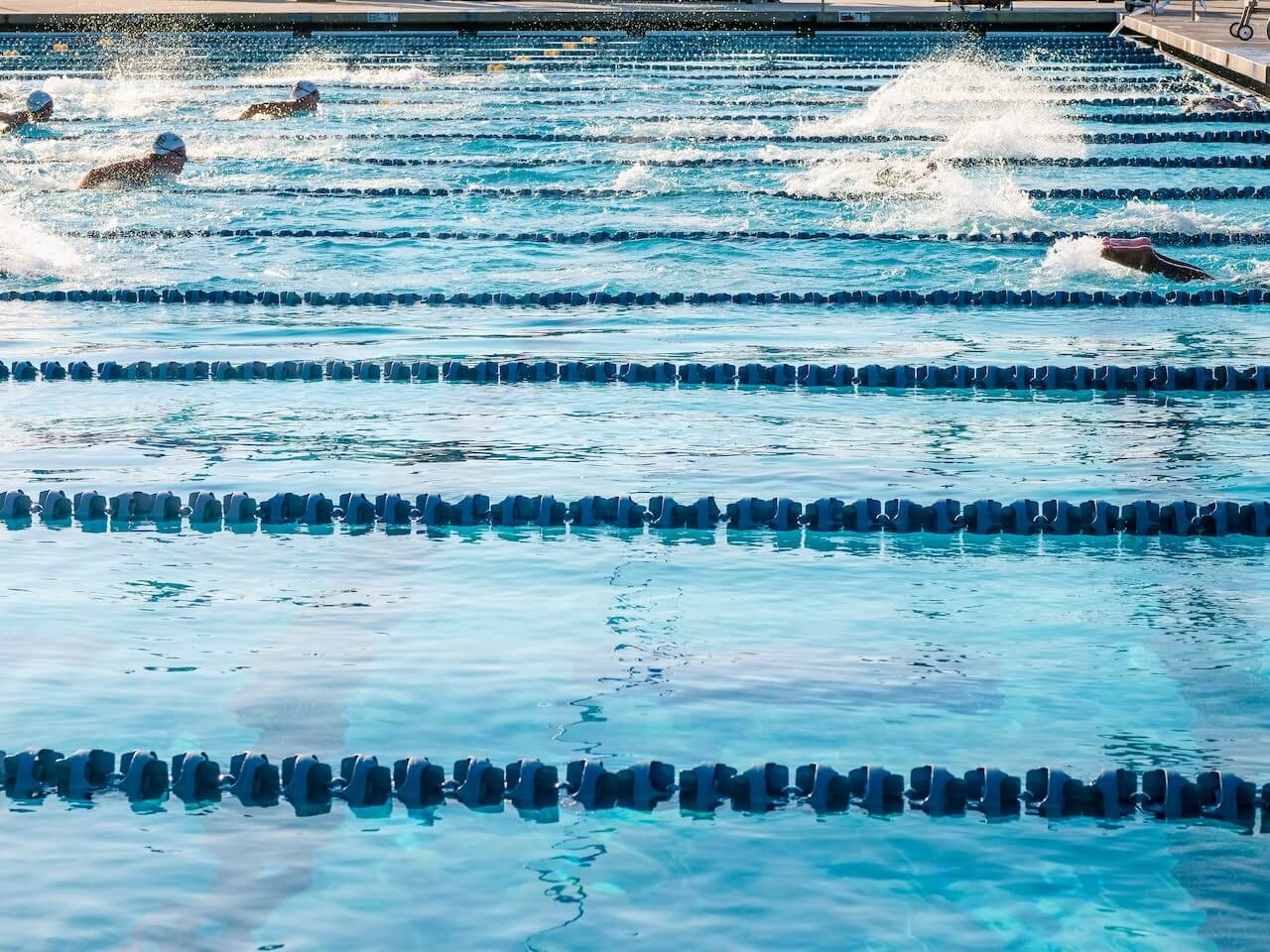Have you ever had a major disagreement with another swimmer before because both of you had a different definition of a lap than the other? Or did you have trouble adhering to a swimming workout because you thought you had to do twice the number of laps than you actually needed to do? Don’t worry, we’ve all been there.

In this article, we will go over what is considered a lap in a swimming pool, and answer other similar questions you may have about swimming laps at the pool.
What constitutes a lap in a swimming pool?
In the swimming community, a lap is synonymous with one length of the pool. A lap is not there and back; it is simply from one end of a pool to the other. So in a 25 meter pool, one lap is 25 meters. In a 25 yard pool, one lap is 25 yards. In a 50 meter pool, one lap is 50 meters. Swimming to one end and back counts as two laps.
Does swimming there and back count as one lap?
No, that would be two laps.
What is the difference between a lap and a length in a pool?
None, they are the same.
Does the size of the pool affect how many laps I should swim?
Yes, the size of the pool does affect how many laps you should swim. The larger the pool, the fewer laps you’ll need to swim to cover a certain distance.
For example, you would need to swim twice as many laps in a 25-meter pool as you would in a 50-meter pool to swim the same total distance. The key here is not the number of laps, but the total distance you’re swimming, especially if you’re training for a specific event.
What is the average number of laps a person can swim in a pool?
The average number of laps a person can swim in a pool varies widely and depends on several factors, such as the individual’s swimming ability, fitness level, and the length of the swimming session.
For instance, a beginner might start with 5-10 laps of a 25-meter pool, while a more experienced swimmer might easily complete 30-40 laps or more in the same pool. Swimming workouts are often measured in total distance (laps x pool length) rather than the number of laps alone.
How does the type of swimming stroke affect the number of laps?
The type of stroke can affect the number of laps in two main ways: speed and energy expenditure. Some strokes, like freestyle, are faster and more efficient, so you might be able to swim more laps in a given amount of time.
Other strokes, like the butterfly, use more energy, so you might swim fewer laps in the same amount of time due to fatigue. However, the stroke does not change what is considered a lap; regardless of the stroke used, a lap is still one length of the pool.
How do I track the number of laps I’ve swum?
There are a few different ways to track the number of laps you’ve swum. Some people use physical counters, like pool beads or lane counters. Others rely on mental strategies, like setting up a pattern or rhythm in their heads. There are also digital solutions like smartwatches or fitness trackers that can automatically track your laps as you swim.
Is there any equipment to help me count my laps in the pool?
Yes, there is equipment available that can help you count your laps in the pool. Some examples include:
- Digital Lap Counters: These are wearable devices or wristbands that count laps as you touch the wall or flip turn.
- Swim Watches or Fitness Trackers: Many smartwatches and fitness trackers have a swimming mode that can automatically detect and count laps.
- Pool Beads or Lap Counting Beads: These are manual counters where you slide one bead per lap.
Does the depth of the pool impact how a lap is counted?
No, the depth of the pool does not impact how a lap is counted. A lap is determined by the length of the pool, not its depth. Whether the pool is shallow or deep, a lap is still considered one length of the pool.
How do swimmers calculate the number of laps in different pool lengths?
Swimmers calculate the number of laps in different pool lengths based on the total distance they want or need to swim. For example, if a swimmer wants to swim a mile (approximately 1600 meters), they would need to swim 64 laps in a 25-meter pool or 32 laps in a 50-meter pool. This calculation is simply the total distance divided by the length of the pool.
Some people define laps as there and back, who’s right?
Rather than debate about whether a lap is from one end of a pool to the other, or if it is there and back, we can all agree that the important thing is that you’re tracking the total distance swum in a swimming workout.
At the end of the day, as long as you know this number, then you can use that as a reference point and push yourself further beyond during subsequent workouts.
Sources:

